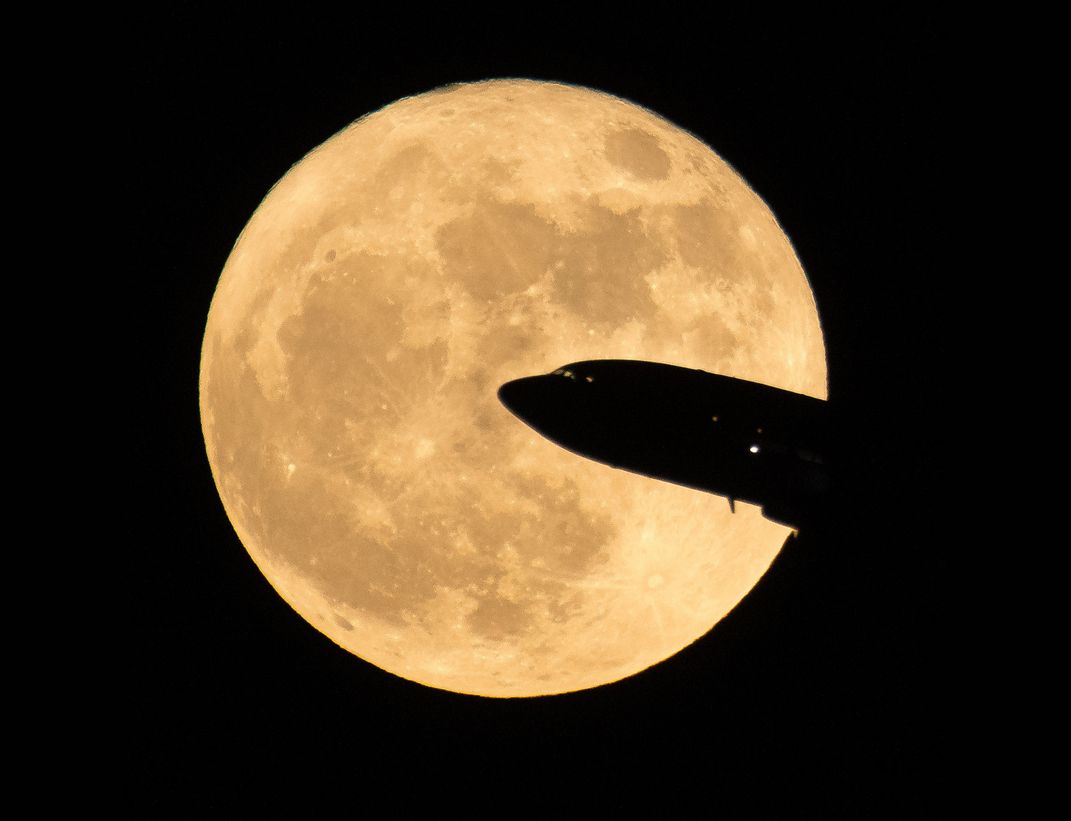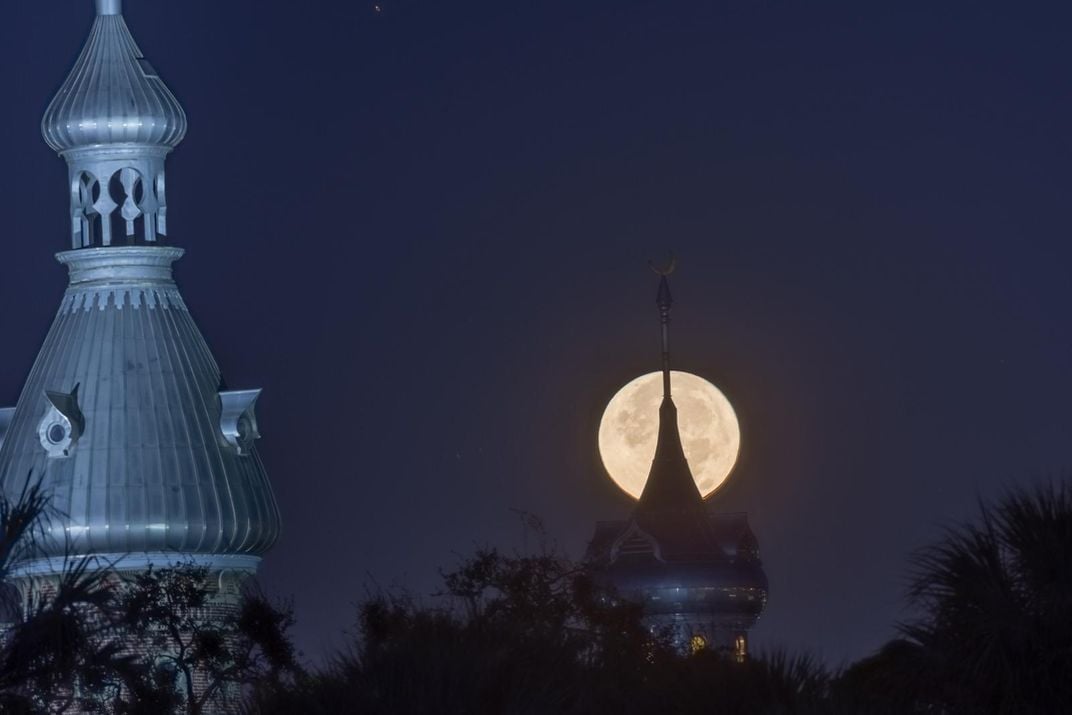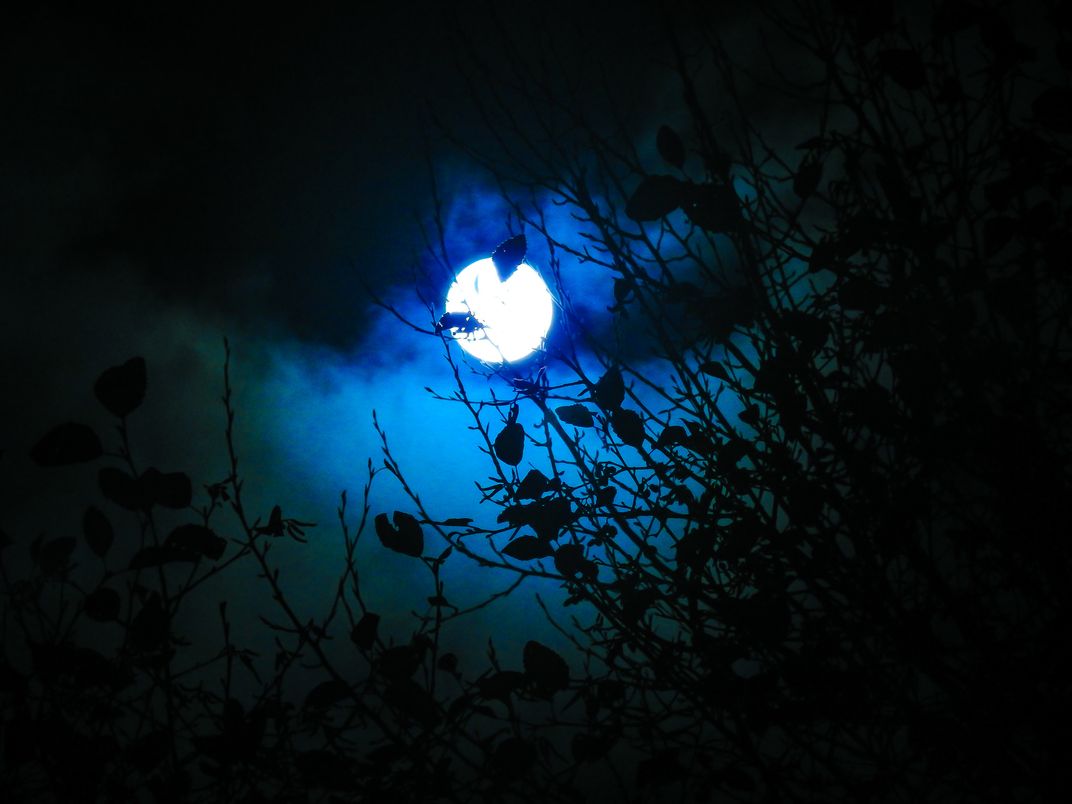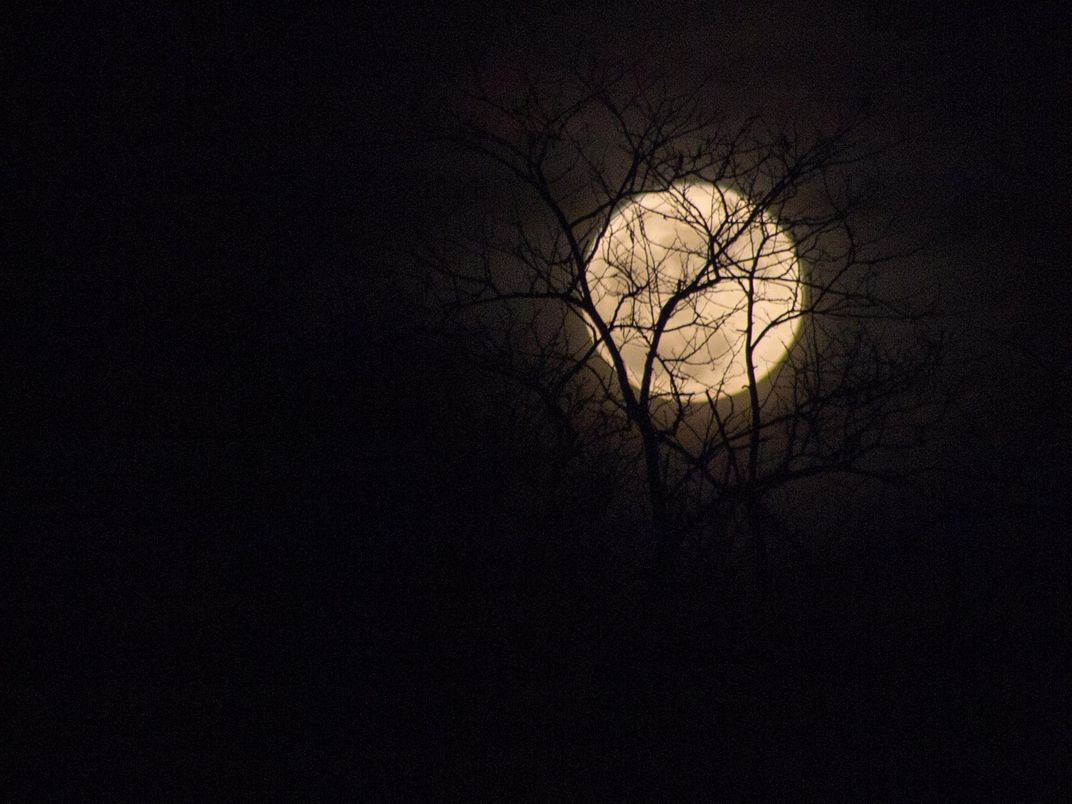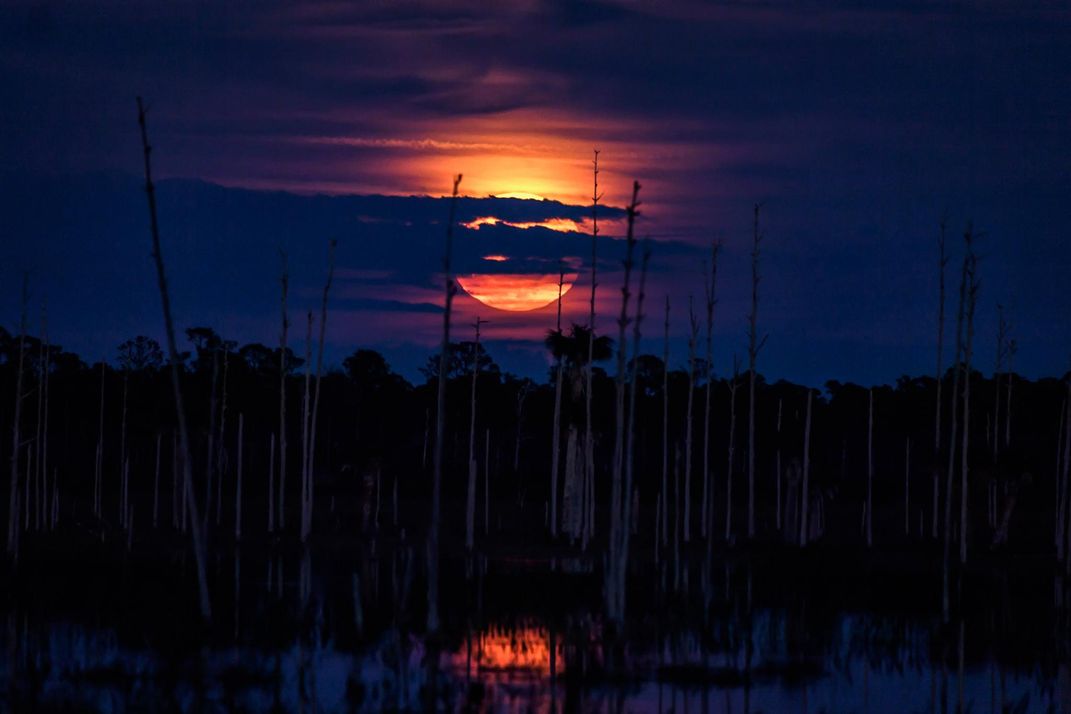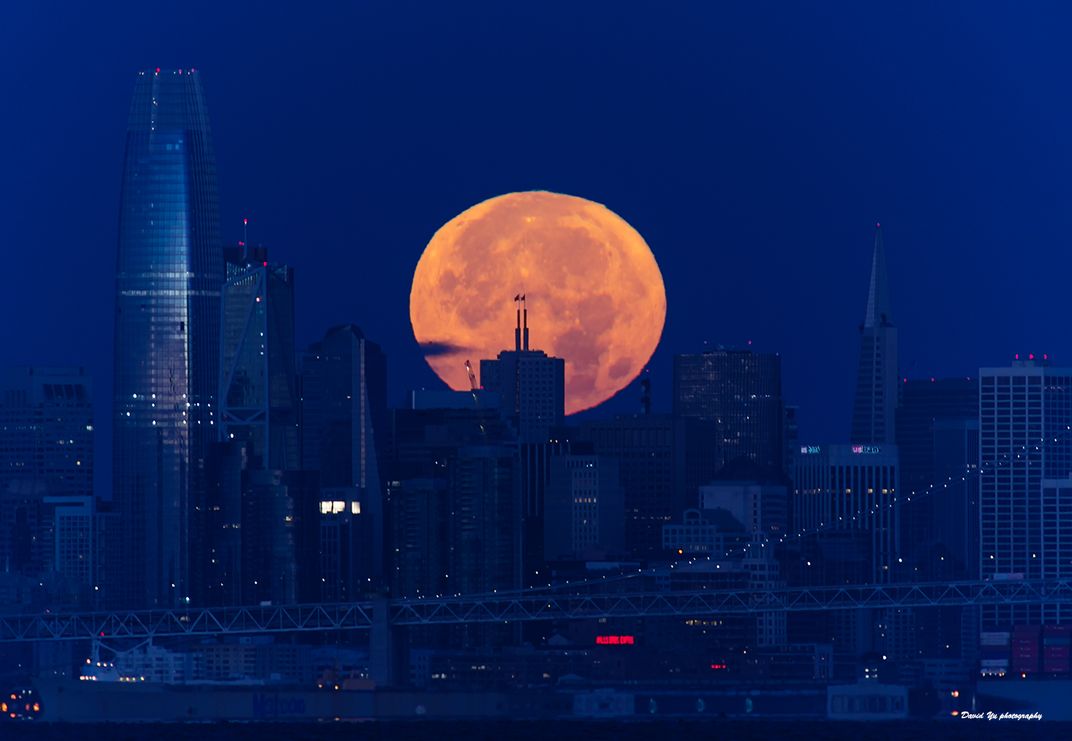Super Pictures Capture This Year’s Only Visible Supermoon
If you missed last night’s celestial show, these images feature our lunar orb in all its glory
This weekend, the moon slid past Earth a mere 222,135 miles away, appearing 14 percent bigger and 30 percent brighter than average. It was this year's boldest supermoon. Don't worry if you missed the celestial show, take a look at some pictures that capture it in all its super glory.
These brilliant moons take place because the lunar orb's journey around the Earth is not perfectly circular, reports Jesse Emspak at Space.com. On average the moon circles some 238,000 miles away, but due to its irregular orbit sometimes it’s a bit closer, and sometimes it's a bit further away. A supermoon is when our lunar buddy slides into its closest point, or perigee and is in its full or new stage.
This wasn't the first supermoon of the year, it’s the fourth. But the others were hidden. The past three supermoons happened during new moons of April, May and June, making the December full moon the only visible supermoon.
As Bruce McClure and Deborah Byrd at EarthSky report, the supermoon was defined by astrologer Richard Nolle more than three decades ago. And is sometimes over-hyped as being big, bold and super bright. As astronomer Gurtina Besla told Rebecca Feldhaus Adams at NPR before the latest celestial event, it's often hard to notice any difference between a regular full moon and supermoon.
But as EarthSky reports, the phenomenon can be considered modern folklore that has recently entered the mainstream. And it does have some real-world effects. Spring tides, the largest tides of the month, usually occur near the full moon, and during supermoons they are usually slightly larger than normal. Last year’s November supermoon was the moon's closest pass in 70 years, and won’t be repeated until 2034.
Even if the moon is only slightly larger and brighter, moonwatching is always a fun activity—and makes for some breathtaking pictures. As EarthSky reports, you'll soon have another chance to catch a full supermoon. These bold lunar orbs will take to the skies January 2 and 31, which will make it a rare blue supermoon.


/https://tf-cmsv2-smithsonianmag-media.s3.amazonaws.com/filer/eb/c9/ebc9b09e-91fd-4837-bf36-c790d12254b0/38787244612_353469c1e4_k.jpg)
